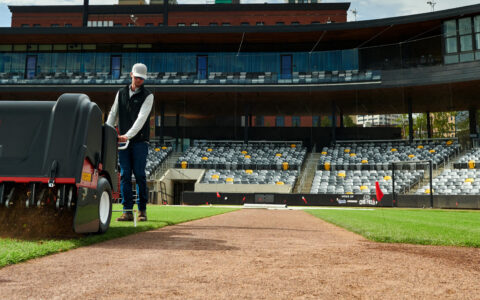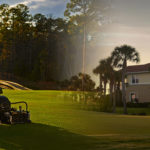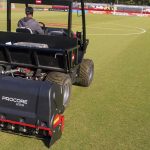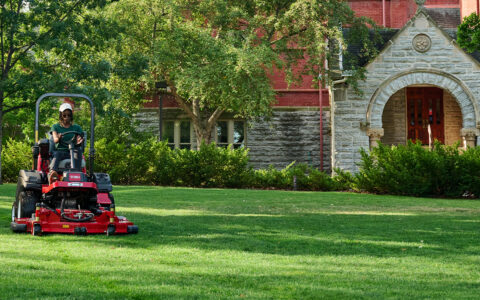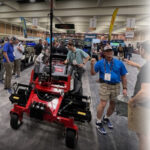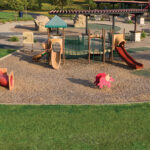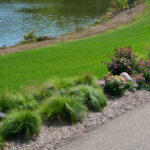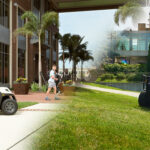Aeration is one of the most beneficial practices you can do for your sports field turf. It creates an environment where air, water and nutrients can efficiently flow between the turf surface and root zone. Improved flow means fewer resources are needed to build a healthy and robust sports field.
What to Do When: Core vs. Solid Tine Aeration
May and August are ideal times to core aerate sports fields. Turf is actively growing and fields are likely in limited use.
Core aeration helps relieve soil compaction, allows proper air, water and nutrient movement, and stimulates root development. An added benefit: Seed and fertilizer applied after aeration move nutrients immediately into the root zone to promote healthier growth. Aeration also helps control thatch, which can become a breeding ground for insects and disease.
Solid tine aeration can be done throughout the season and helps create an environment for efficient plant respiration.
Solid tine aeration minimizes turf stress, so it’s well suited for summer temperatures. Because no cores are removed, the disturbance to the turf surface is minimal. Plus, the turf can be used immediately after aeration.
Cover Large Areas Faster
For maximum productivity, it’s tough to beat Toro’s ProCore® 864 (64”) and 1298 (98”) tractor-mounted aerators.
They’re quiet, easy to operate and up to 25 percent wider than current competitive units, so you can cover more ground in less time. In fact, the 864 can aerate a soccer field in about 70 minutes, the 1298 in about 50 minutes. Not bad for a task that benefits turf all season long!
The ProCore 1298 has dual coring heads that articulate to follow undulations in the turf. In addition, you can run both machines in the raised position — so it’s easy to make turns and avoid buried objects such as irrigation heads. The precision-balanced coring head also eliminates hopping, rocking and unnecessary vibration.
For more information about Toro aeration equipment and highly durable Toro TITAN® aeration tines, visit toro.com/cultivation.



